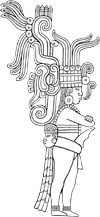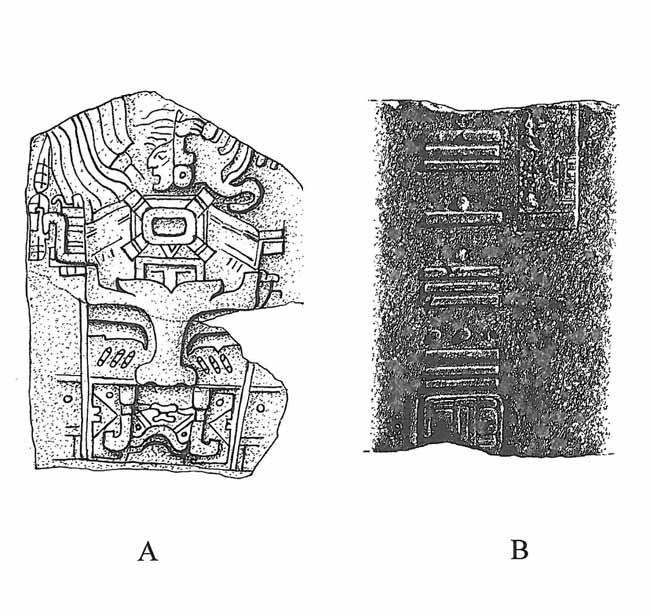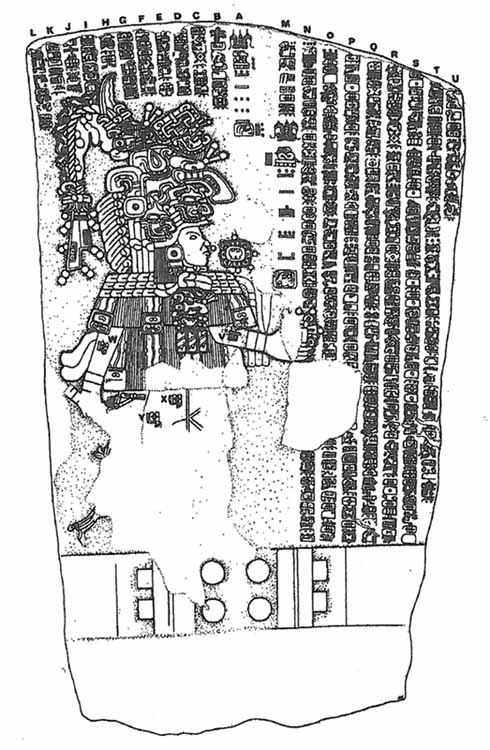

|
Death Gods, Smiling Faces and Colossal Heads: Archaeology of the Mexican Gulf Lowlands by Richard Diehl |
|
| |
The Late Formative (300 B.C.-300 A.D.) The Gulf Coast regions west of the Olmec heartland were occupied by egalitarian village farmers during the Early and Middle Formative periods. After 600 B.C. the pace of cultural change quickened and increasingly complex societies evolved in the territory between the Tuxtla Mountains and the Panuco River. Unfortunately, virtually nothing is known about Late Formative occupations in the region beyond the simple fact of their existence. The only exception to this generalization is Tres Zapotes, a large site located at the northern edge of the Tuxtla Mountains. Tres Zapotes has a long, complicated, and poorly defined history of occupation. It is most famous for its stone monuments, including three colossal heads clearly in the Olmec genre yet notably distinct from those of San Lorenzo and La Venta found at or near the site. Although scattered Early Formative ceramics indicate an Initial Olmec period population, the majority of the occupation and virtually all of the known twenty-four stone monuments belong to the Late Formative Epi-Olmec phase. Many of these carvings reflect the Izapa sculptural tradition native to southern Mesoamerica's Pacific Coast and piedmont zone, suggesting a reversal in the directionality of cultural influences over the earlier situation in which Olmec heartland societies left a strong imprint on their southern neighbors. Tres Zapotes is famous for Stela C, a rectangular stone block with a post-Olmec Izapa-style mask on one side, and a Long Count date expressed in bars and dots on the other (Fig. 4.3). The date, 7.16.6.16.18 6 Eznab (31 B.C.), is one of Mesoamerica's oldest calendrical inscriptions.
When Matthew W. Stirling discovered the monument in 1939, his reading of the date sparked a debate about the origins of Mesoamerican writing and calendrics that remains unresolved even today. Many scholars assumed that since these elite arts reached their highest development in the lowland Maya region, they must have originated there. Others pointed to Stela C and the Tuxtla statuette - a small greenstone sculpture of a duck or a person wearing a duckbill mask with a carved hieroglyphic inscription thought to be of Late Formative date - as evidence of a Gulf Coast origin of writing and calendrics. In 1957, Michael D. Coe argued cogently that Mesoamerica's earliest known inscriptions occur on Late Formative Izapa-style monuments in Chiapas and Guatemala rather than in the Maya lowlands homeland, a reconstruction that remained unchallenged for many years. However, recent studies show that while Coe's conclusions are correct for Maya writing systems and calendrics, Zapotec writing and calendrics may have appeared in Oaxaca at least several centuries before the earlier Maya inscriptions. A fortuitous discovery in 1986 at La Mojarra, a small archaeological site on the banks of the Acula River, in the Papaloapan drainage, has further complicated the issue (Winfield Capitaine 1988; Morell 1991). A local fisherman encountered a submerged stone stela that had eroded into the shallow river from the edge of the site. The carving on its face depicts an elaborately dressed man standing in profile surrounded by more than 500 glyphs, which form one of the longest-known inscriptions in Mesoamerica (Fig. 4.4). The text contains two Long Count dates read as A.D. 143 and 156. The man's features are deeply cut and well carved in a style strongly reminiscent of Izapa and early Maya sculpture, but the glyphs forming the text are shallow, crudely done scratches reminiscent of modern graffiti.
The stylistic differences between the glyphs and the figure have led to the suggestion that the text is a later addition to an existing monument and perhaps even a modern forgery. Other scholars accept the authenticity of the text, but suggest that the monument fell off the raft into the river in front of La Mojarra while in transit to some larger, more important center. Today most authorities accept the authenticity and early date of the text. In 1993, linguists John S. Justeson and Terrence Kaufman proposed a widely accepted decipherment of the script, which they refer to as Epi-Olmec, and the La Mojarra text. They maintain that the Epi-Olmec script is in Zoquean languages still spoken in the greater Isthmian region. According to their reading, the La Mojarra stela documents the rise to power of the ruler depicted on it while mentioning warfare, ritual activity, and astronomical events. At the moment the stela is one of only four or five known Epi-Olmec texts; unfortunately, the others are too short to help epigraphers improve their understanding of the script. Many puzzles remain to be solved, despite the recent breakthrough by Justeson and Kaufman. Did the script originate in the southern Veracruz/greater Isthmian region or somewhere else? Do its roots lie in an undiscovered Olmec script? How is it related to later Classic Maya writing? Why did it disappear, apparently the only Mesoamerican writing system to die out in precolumbian times? Why is its only lengthy text, one of the longest inscriptions known on any precolumbian stone monument, found at such a modest archaeological site located in what appears to be a cultural backwater zone? These and similar issues will be resolved only after archaeologists recover additional inscriptions in controlled and well-documented excavations. |
|
|
Text links to all pages at this site are available at the FAMSI INDEX |
||

